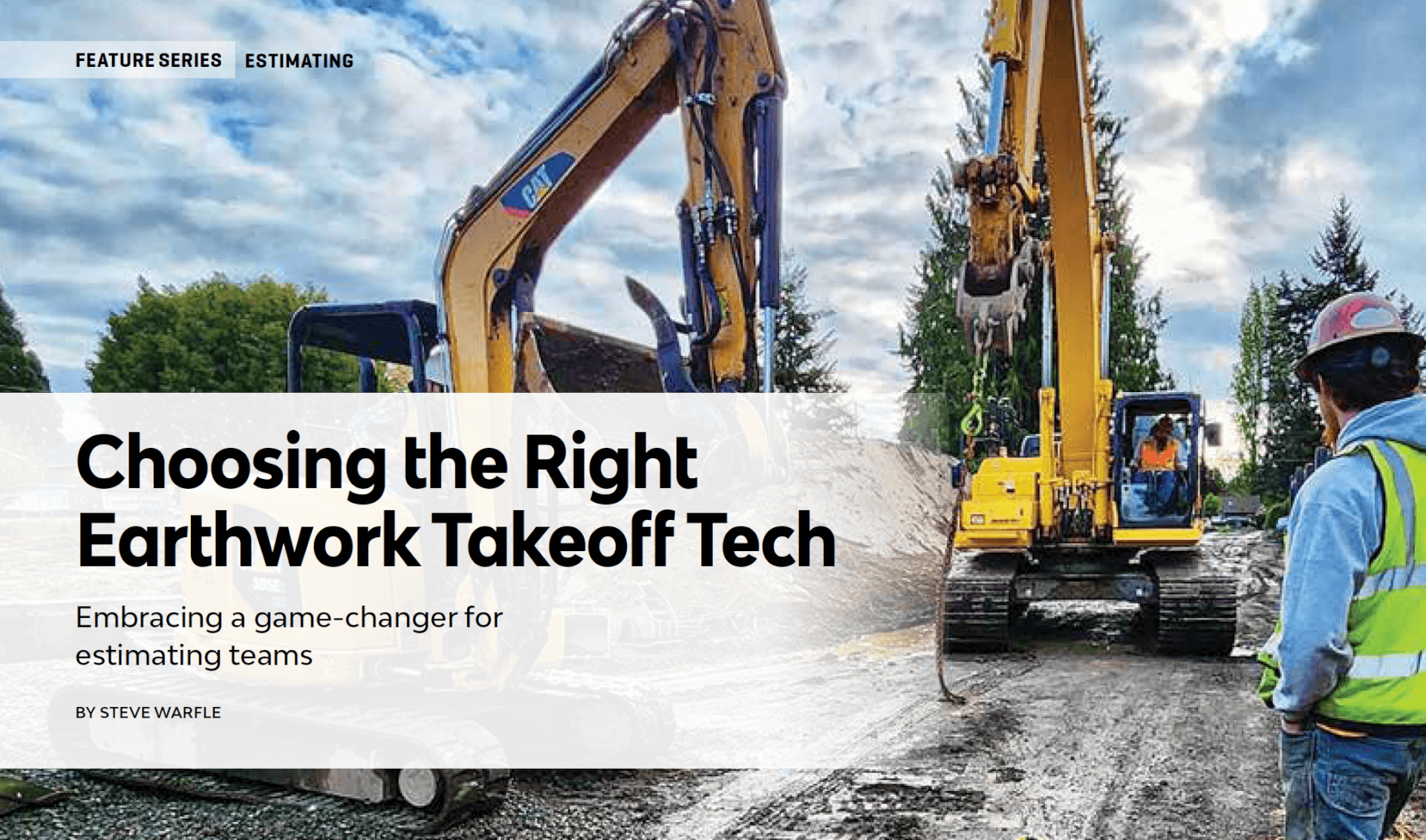Embracing a game-changer for estimating teams
June 27, 2024

Successful companies consistently reduce labor costs and enhance quality on jobsites through investments in modern machinery. Similar opportunities exist in the office setting, though the benefits may not be as immediately apparent. Moreover, the mindset of “what we have works, so why change?” can often hinder potential improvements.
Below are 10 considerations for choosing the right tech partner.
1. The office is a production environment.
Top-tier companies minimize risk during the bid process by leveraging all available data — plans, site visits and historical performance — to create a competitive bid. This starts with an experienced estimator or estimating team that has a solid understanding of all phases of the construction project and all production capabilities of the company. These are often the most highly compensated and valuable employees.
Investing in the appropriate technology not only reduces the time required for bidding but also supplies reliable data that can help pinpoint both challenges and opportunities. This allows for aggressive bidding and enhances communication with your team throughout the project’s duration. Getting things done faster gets employees home on time and keeps them happy.
5. Takeoff and design are not exclusive.
The takeoff process assumes that all data necessary to complete a project can easily be measured. However, intermediate phases of excavation are often required for jobs such as retaining walls and basement layback, storm vaults, etc. These phased projects increase the complexity of the takeoff and risk. Software that allows easy and fast calculation and 3D visualization of each phase of excavation allows contractors to move beyond simple projects.
6. Consider the value engineering opportunity.
A site that has expensive import or export requirements provides an opportunity to offer alternatives to lower costs and generate preferred bidding status. Site balancing too
7. Provide location-based data to everyone on-site.
GPS in mobile devices provide excellent accuracy for reconnaissance, planning and identifying delivery locations to suppliers. Exported KMZ files can provide location-based information to anyone with a phone or tablet for display in Google Earth and other geo-browsers. The original plans overlaid with grading depths and other important data can be sent to site staff, suppliers and other partners.ls must allow an easy way to rework a job to a more balanced condition to minimize cost and maintain the drainage and aesthetic requirements of the site. Presentation of the changes in both reports and graphics is critical to credibility.
8. GPS machine control is a must for grading contractors.
Software that allows triangulation-based takeoff from vector sources and enables 3D surfaces to be exported to GPS machine control streamlines the model-building experience and removes dependencies and expense from third-party model builders. The ability to export to all brands of machine control satisfies the mixed fleets prevalent on jobsites.
9. Training is essential.
All computer software is susceptible to the “garbage in, garbage out” principle. The risk associated with generating quantities underscores the importance of effective training. Individuals have unique learning styles. Some people will devour a manual, some will watch videos and others need classes with a live instructor during a scheduled time slot to focus on learning. For most, it’s a combination, and it’s important that a vendor provides comprehensive learning content and accessible classes for onboarding. It is also important that training is available to all employees involved in takeoff and using the data produced.
10. Choose a partner that provides constant innovation.
Computer-based 3D takeoff has been accessible for over 40 years. 3D takeoff has seen advancements in accuracy, productivity and communication with each generation. For example, the transition from manual grid or cross-section takeoffs to the first digitizer-based systems of the ’90s marked a significant increase in productivity, similar to the improvements seen with vector selection takeoff from PDF and CAD files. Modern solutions that facilitate seamless merging and takeoff from multiple documents simultaneously offer opportunities that legacy systems cannot match. Adhering to outdated technology puts your company at a competitive disadvantage.
Commitment Paves the Path to Success
Investing in cutting-edge technology is a step in the right direction, but its success hinges on effective implementation and employee acceptance. Some points to consider:
- The best technology, training and technical support can’t overcome unrealistic expectations. Takeoff software is a productivity tool for skilled estimators and will not overcome a lack of experience.
- Commitment must come from everyone involved. The rogue employee who tries to sabotage progress by resisting change threatens your company’s future.
- The correct hardware specified by the software manufacturer is essential.
- Training comes before production. Vendor-provided training provides product awareness of all the software’s capabilities and allows validation of data input that isn’t tied to the risk of a pressing bid. Dedicating time to onboard training is the most efficient route toward optimizing your software investment.
Embracing technology is no longer optional for construction companies looking to thrive in today’s fast-paced environment. By choosing the right technology partner and implementing modern solutions effectively, companies can unlock new levels of efficiency, quality and success.
Steve Warfle is the co-founder and president of InSite Software Inc., an industry provider of CAD and PDF earthwork takeoff and GPS machine control modeling solutions. The company’s newly designed software solution Elevation Pro, takes the guesswork out of bidding, increases accuracy and speeds up the bidding process so estimators can bid on more jobs in less time.
This article was written for the July 2024 edition of Construction Business Owner